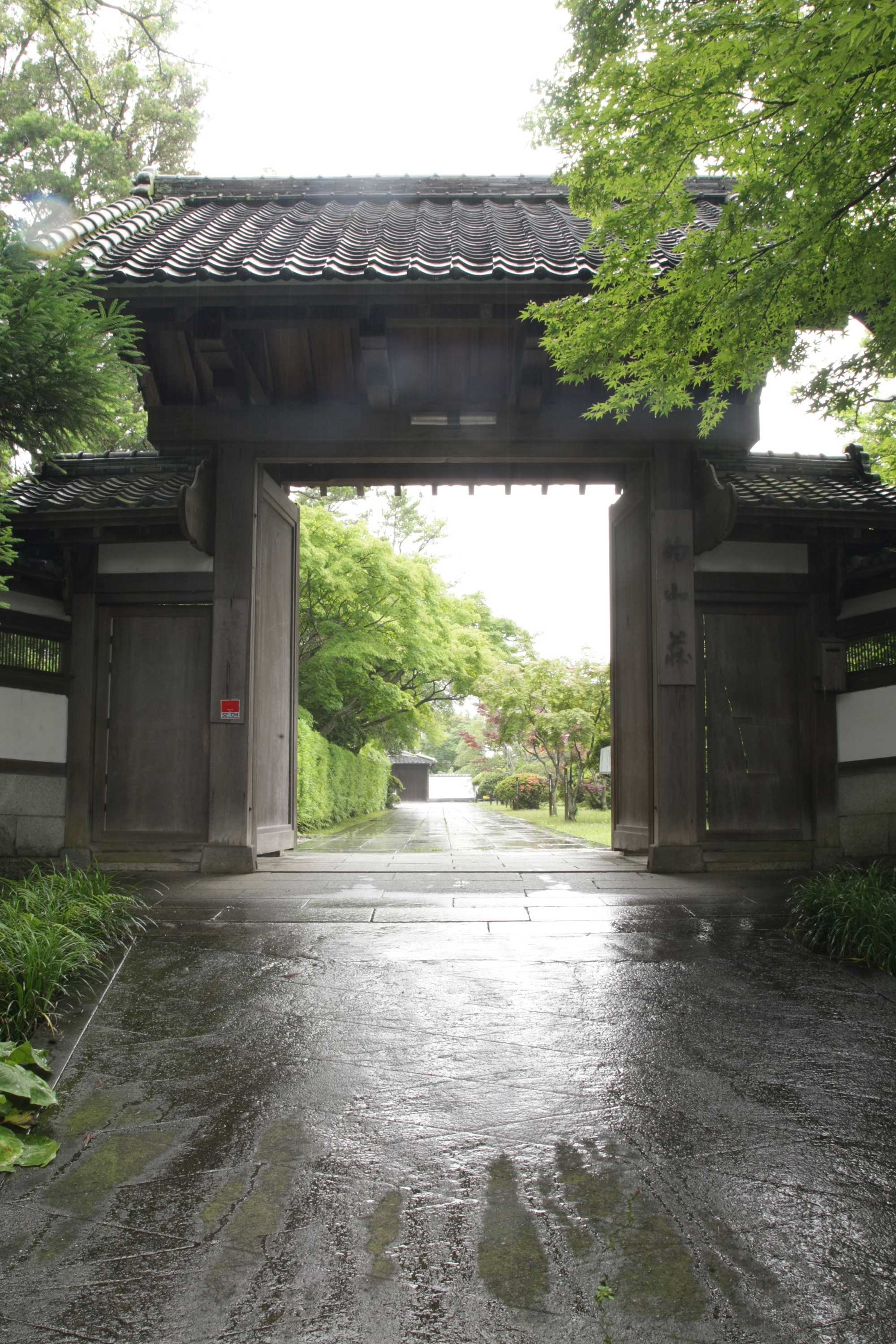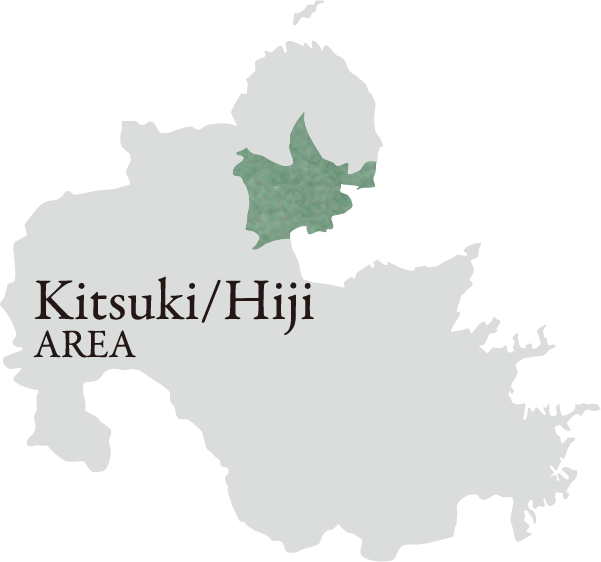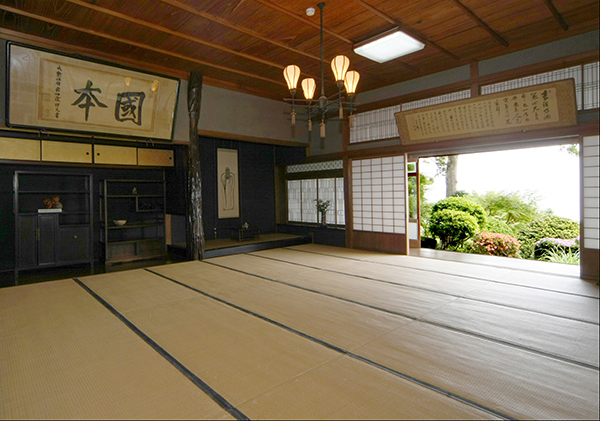

- Kitsuki & Hiji
- Buildings・Former Residence
Tekizan-Sou
Photography/MIYAJI Yasuhiko
an Early Taisho-Era Mansion
At the former site of sannomaru of Youkaku Castle overlooking the sea in Hiji is Tekizan-so, a mansion built by Hiroe Narikiyo (1864-1916), called the King of Gold Mines. The building is in the style of early Taisho-era Japanese architecture, and in the garden, the lavish landscape uses the natural scenery, with the Beppu Bay as the garden pond and Mount Takasaki as its hill.
Hiroe was born in what is currently Town of Setaka in City of Miyama, Fukuoka Prefecture. It is said that his ancestors were vassals of the Otomo clan. While he was both involved in the civil rights movement as a politician and worked in the coal mining industry, he later took over Bajou Gold Mine (Yamaga, Kitsuki), which had been run by the Tateishi Clan in the Edo Period, surviving flooding and other hardships to succeed in finding promising gold veins.
Its heyday was from 1914 to 1922. Its rich output resulted in monthly incomes recorded at ¥400,000 (currently about ¥1.2 billion), making it Japan’s preeminent gold mine.
Tekizan-sou was built with this wealth in 1915. Nearly ¥250,000 (currently about ¥800 million) was invested in this mansion. Tekizan was a pseudonym Hiroe used for Chinese poetry, which contains the meaning of “winning a fortune.” The reason Hiji was chosen was because it was a port for shipping gold ore.
The mansion site, which is more than 1,200 square meters and surrounded by a fence, has a gabled gate with shingle roofing, mostly remained unchanged since its building, which leads to the rotary at the entrance. Craftsmanship is used everywhere throughout this more than 800 square meter Japanese home, and the sea breeze passes through the garden to the banquet hall. The framed “Kunimoto” is the work of Hirobumi Itou.
Hiroe also worked to subsidize finance, transportation, and charity, but soon died and passed the mansion to his offspring, who turned it into Tekizan-sou Restaurant after the war in 1964, helping to spread the specialty Shiroshita Karei. However, the building aged and became difficult to manage, so Town of Hiji bought it as a cultural property. In 2014 it was designated by the nation as an Important Cultural Property and took a new step forward as a Japanese restaurant under special management.

Framed “Kunimoto” hanging in the banquet hall.

